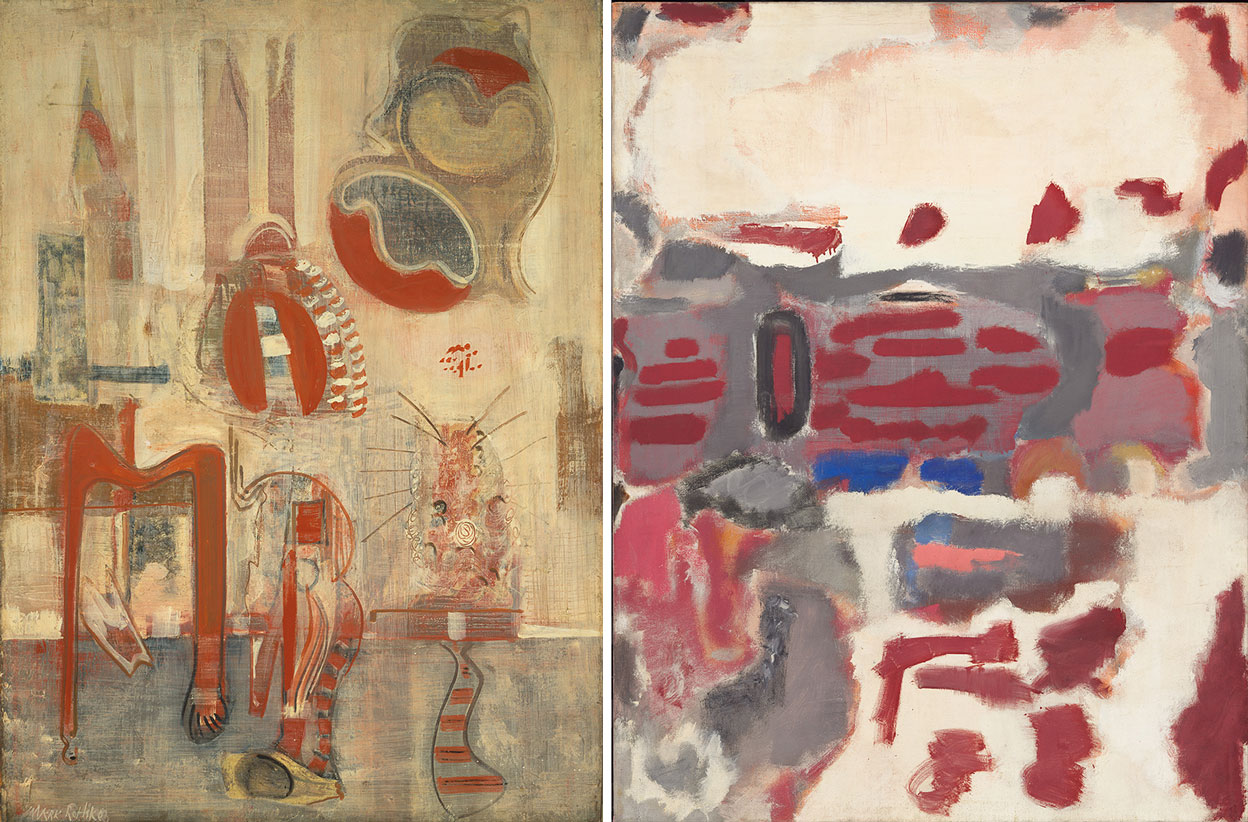ART-PRESENTATION: Mark Rothko
 Considered as one of the most renowned figures in the history of Abstract Expressionist Movement, Mark Rothko left a significant legacy throughout his life as an artist. He moved through many artistic styles until reaching his signature 1950s motif of soft, rectangular forms floating on a stained field of color. With unsparing intensity and a total commitment to risk, Rothko created a form of human drama that continues to move and inspire artists, curators and the general public to this day.
Considered as one of the most renowned figures in the history of Abstract Expressionist Movement, Mark Rothko left a significant legacy throughout his life as an artist. He moved through many artistic styles until reaching his signature 1950s motif of soft, rectangular forms floating on a stained field of color. With unsparing intensity and a total commitment to risk, Rothko created a form of human drama that continues to move and inspire artists, curators and the general public to this day.
By Efi Michalarou
Photo: Kunsthistorisches Museum Wien Archive
The exhibition of paintings artist Mark Rothko that is on presentation at the Kunsthistorisches Museum in Vienna, presents a survey of Rothko’s career through more than 40major paintings to explore ideas of the sacred, the spiritual, the tragic and the timeless. The exhibition provides a unique opportunity to examine Rothko’s deep and sustained interest in the art of the past. From his earliest visits as a student to the Metropolitan Museum of Art in New York, and his first encounters with Rembrandt, Vermeer and classical art and architecture, to his trips to Europe to see its churches, chapels and Old Master painting collections in Paris, London, Venice, Arezzo, Siena, Rome, Pompeii and Florence, Rothko dedicated himself to the study of historical art and architecture. The exhibition reveals the radical development of Rothko’s work across several decades, from his early figurative paintings of the 1930s, through the transitional years of the 1940s to the groundbreaking mature works of the 1950s and 60s. At the heart of the exhibition is an entire gallery of large-scale mural paintings produced in 1958-59, originally commissioned for the Seagram Building in New York. This is followed by a final gallery of classic paintings from the last decade of Rothko’s life that demonstrate how he learnt from the techniques of the Old Masters, layering color in the manner of Titian and developing a sense of ‘inner light’ similar to that of Rembrandt. Mark Rothko was born Marcus Rotkovich on 25/91903 in Dvinsk, part of the Russian Empire (now Daugavpils, Latvia). In 1913, Rothko immigrated to the United States with his mother and sister, joining his father and brothers who had settled some years previously in Portland, Oregon. After studying at Yale, which he left without graduating, Rothko arrived in New York in 1925. Following an invitation from a friend to join a life drawing class, he developed an interest in art and enrolled at the Art Students League. In 1929 Rothko was offered a position teaching children at the Center Academy, Brooklyn Jewish Center, a job he retained until 1952. He married his first wife, Edith Sachar, in 1932, and had his first solo exhibition in New York at the Contemporary Arts Gallery the following year. Soon afterwards, he and several artists friends formed the Avant-garde group The Ten, and began to exhibit together. From 1936 to 1937, Rothko was employed as part of the Federal Works Progress Administration, established during the Depression as a means to support out-of-work artists. As Rothko’s work developed during the early 1940s, he also began to commit his thoughts to writing, in a manuscript called “The Artist’s Reality” which was only published decades after his death. He exhibited at Peggy Guggenheim’s Museum-Gallery Art of This Century in 1945, married his second wife, Mell Beistle, and together with artists such as Jackson Pollock, Barnett Newman, Willen de Kooning and Clyfford Still formed a group of Abstract Expressionists whose groundbreaking work saw New York replace Paris as the centre of the Contemporary Art World. Rothko’s artistic breakthrough came in 1949 when he developed the classic compositional format for which he would become best known. A few months later, in 1950, he made the first of four trips to Europe to visit churches, chapels and Old Master paintings; the art and architecture of Italy, in particular, would have a strong influence on the development of his work. His first major museum exhibition took place at the Art Institute of Chicago in 1954, and from1958 to 1969 he worked on three major commissions: a series of large-scale canvases for the Seagram Building, New York; a group of mural paintings for Harvard University; and a cycle of monumental canvases for a chapel in Houston, Texas, today known as the “Rothko Chapel”. Following a period of ill health, Rothko took his own life in 25/2/1970.
Info: Curator: Jasper Sharp, Curatorial Advisor: Christopher Rothko, Kunsthistorisches Museum Wien, Maria-Theresien-Platz, Vienna, Duration: 12/3-30/6/19, Days & Hours: Tue-Wed & Fri-Sun 10:00-18:00, Thu 10:00-21:00, www.khm.at





